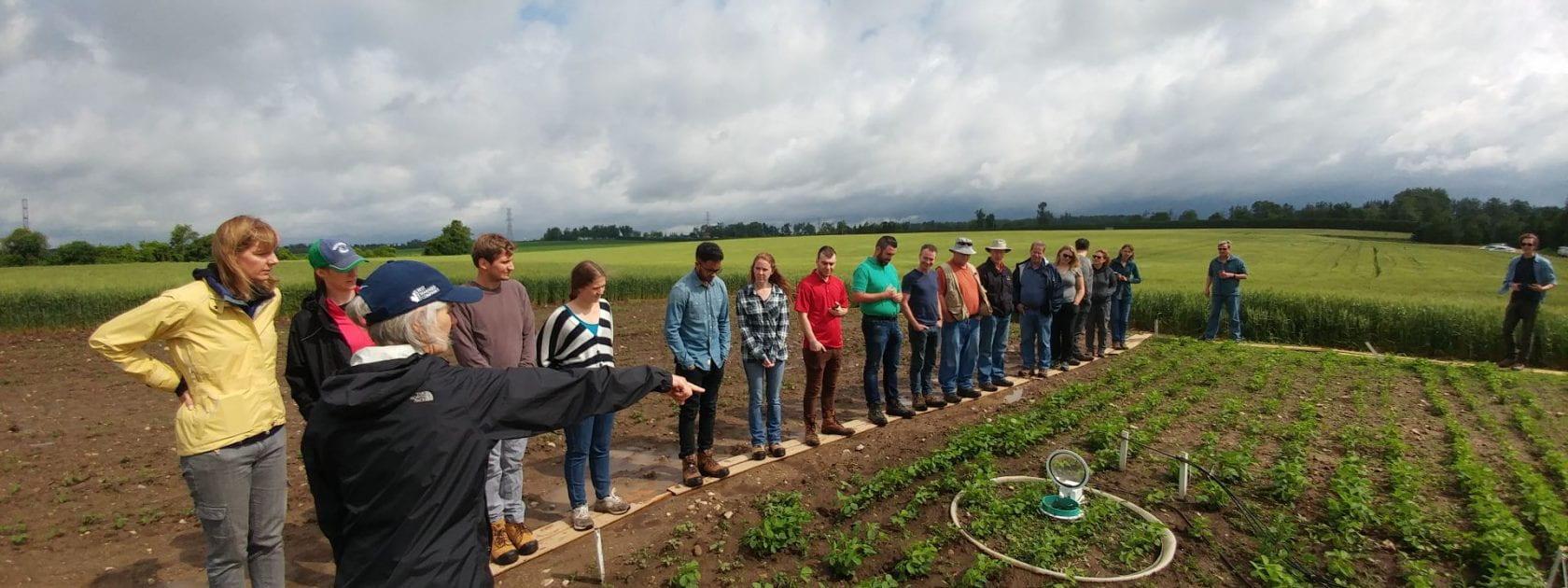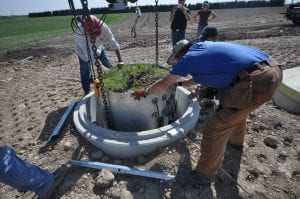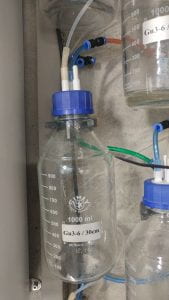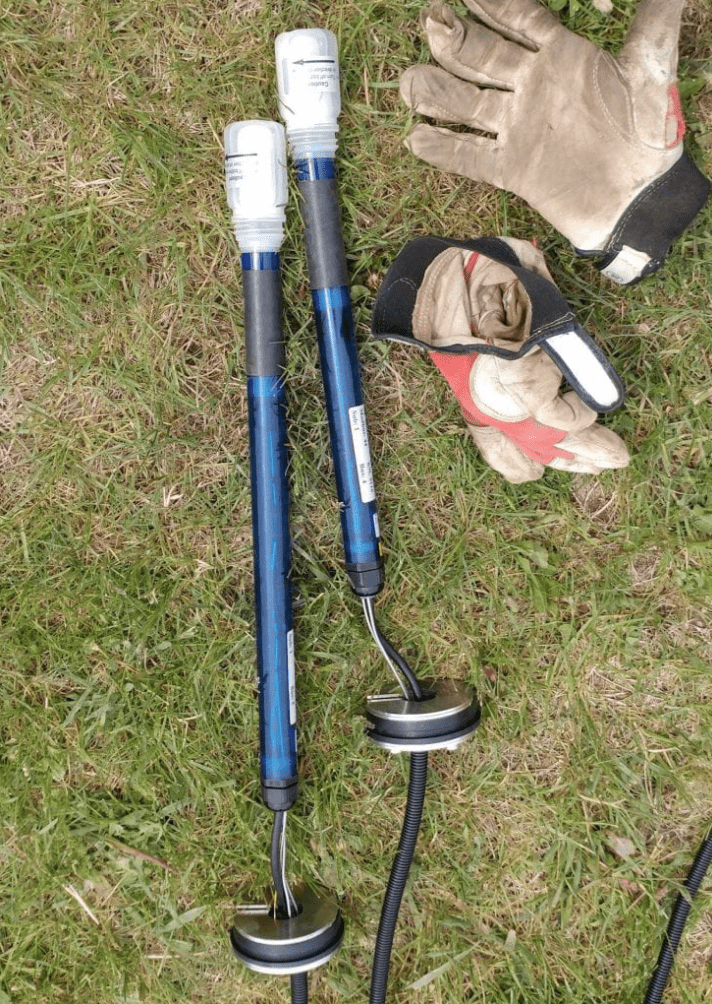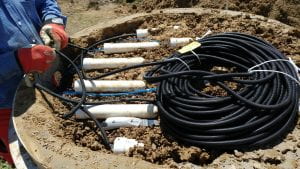Background
The lysimeter facility at the Soil Interpretive Health Centre is a centre dedicated to learning more about soil health and the soil ecosystem services. The infrastructure was built in 2016 with grants from the Canadian Foundation for Innovation and the Ontario Ministry of Research and Innovation. The site features 18 soil weighing lysimeters that are currently examining how the diversification of annual crop rotations impacts soil health, and how agro-ecosystems may be affected by global warming.
Biogeochemical and hydrological variables are challenging to assess in an open soil system. However, weighing soil lysimeters give precise measurements of soil water budget variables and provide a closed nutrient pathway to determine the effects of management on soil, water, and air quality by quantifying biophysical processes. This facility allows for a field scale, side-by-side comparison of differing soil types and crop rotations under similar climate conditions, throughout the whole year. This research will provide realistic empirical data to inform stakeholders on best management practices to promote soil ecosystem services.
Site Description
The Soil Interpretive health Centre is located at the University of Guelph’s Elora Research Station, Ontario, Canada. The site experiences moderately high levels of precipitation with cold winters and warm, humid summers.
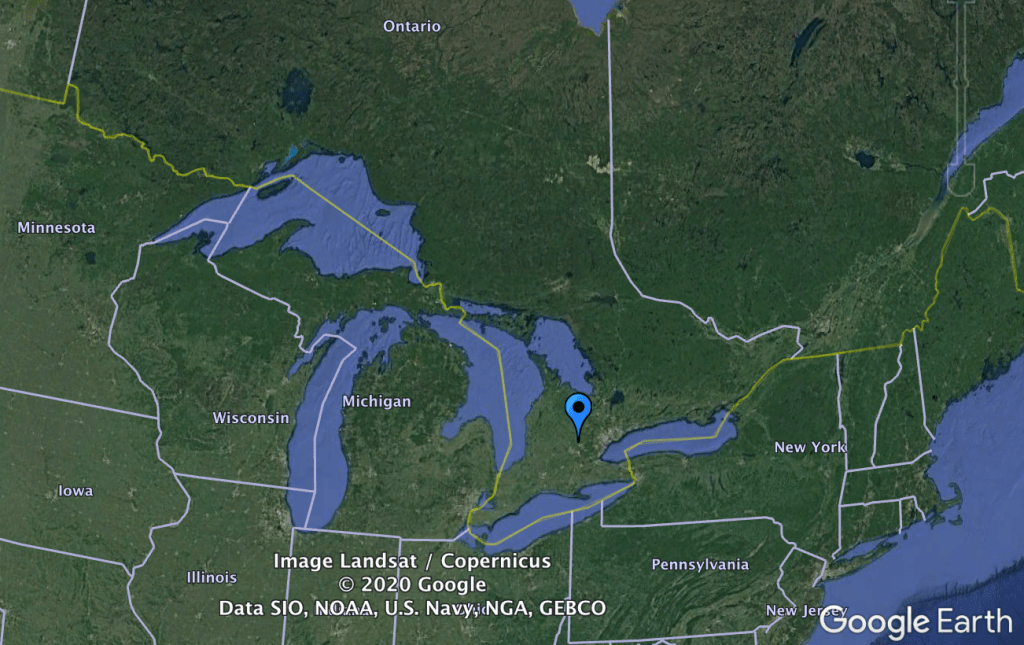
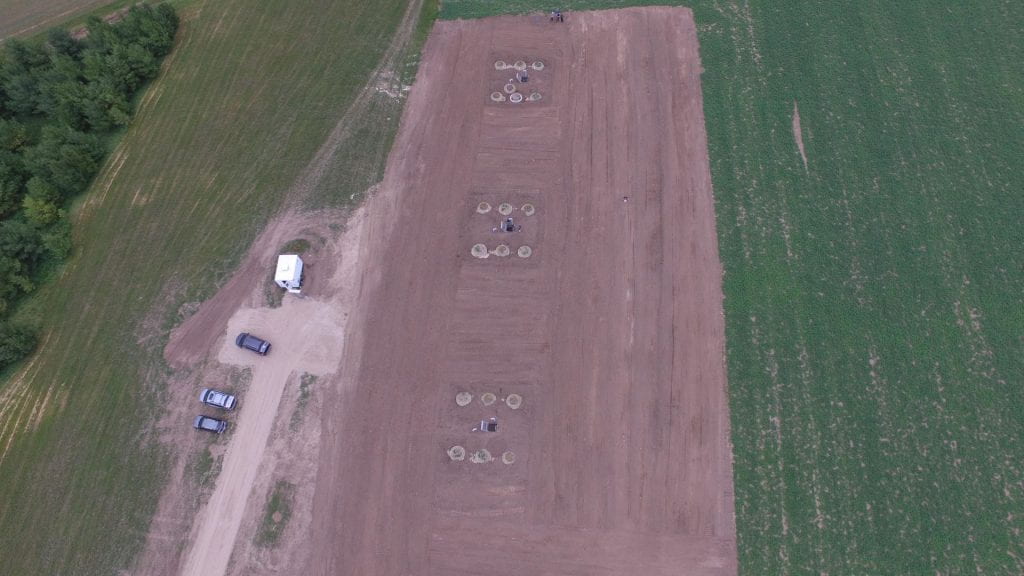
Lysimeter Installation
The Soil Interpretive Health Centre site has 18 lysimeters, half of which contain silt loam soil cores extracted from the Elora Research Station, and the other half containing loamy sand extracted from a farm in Cambridge, Ontario, Canada.
In order to keep the soil cores as undisturbed and as close to field conditions as possible, an excavator was used to slowly press a steel cylinder, 1 m2 in diameter and 150 cm deep, into the ground while the surrounding soil was removed. Once the cylinder was filled, a hydraulic cutter was used to slice through the soil at the bottom.
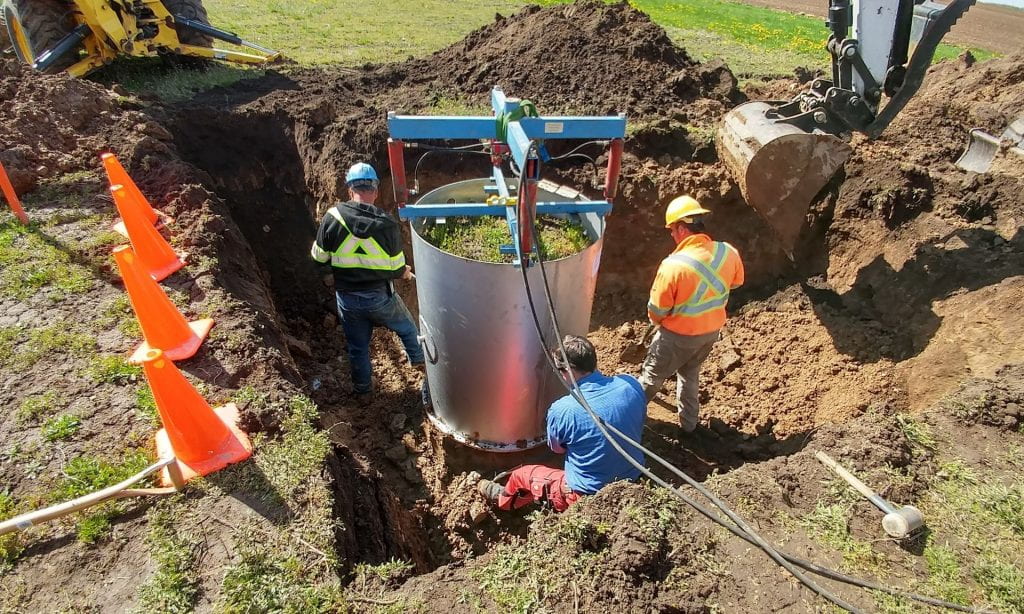
The lysimeter was then lifted and flipped upside-down in order to install ceramic cups on the bottom to allow for water drainage control. Sensors that measure soil temperature, volumetric water content, matric potential, nutrient solution, and gas concentrations were installed at 5, 10, 30, 60, and 90 cm depth within each soil core.
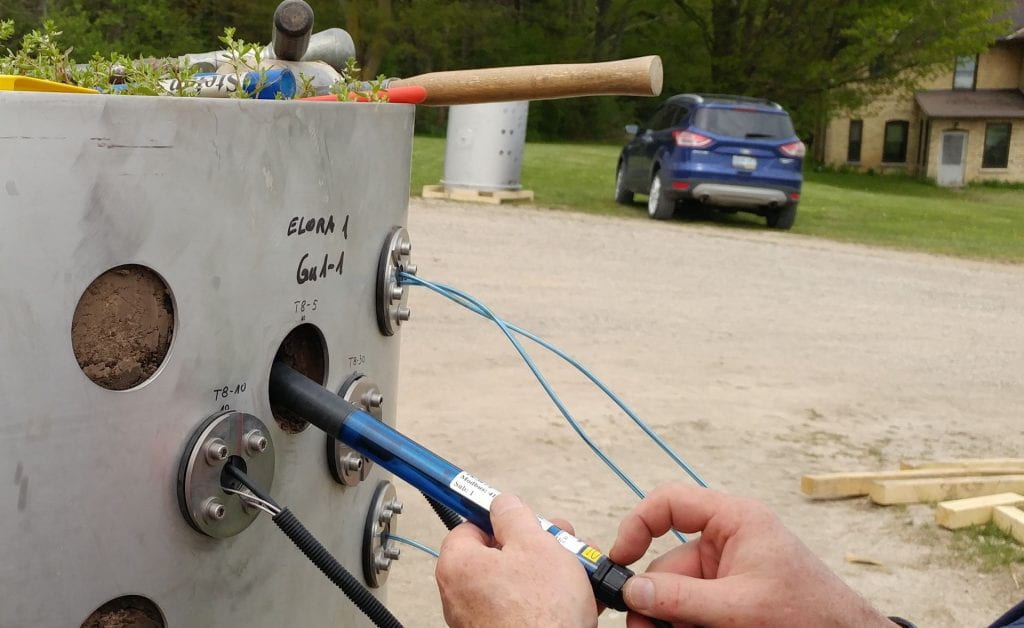
The lysimeters were transported to the field site where they were lowered into the concrete wells onto 3 load cells that measure the weight of the lysimeters (~3000 kg each) with a precision of +/- 10 g.
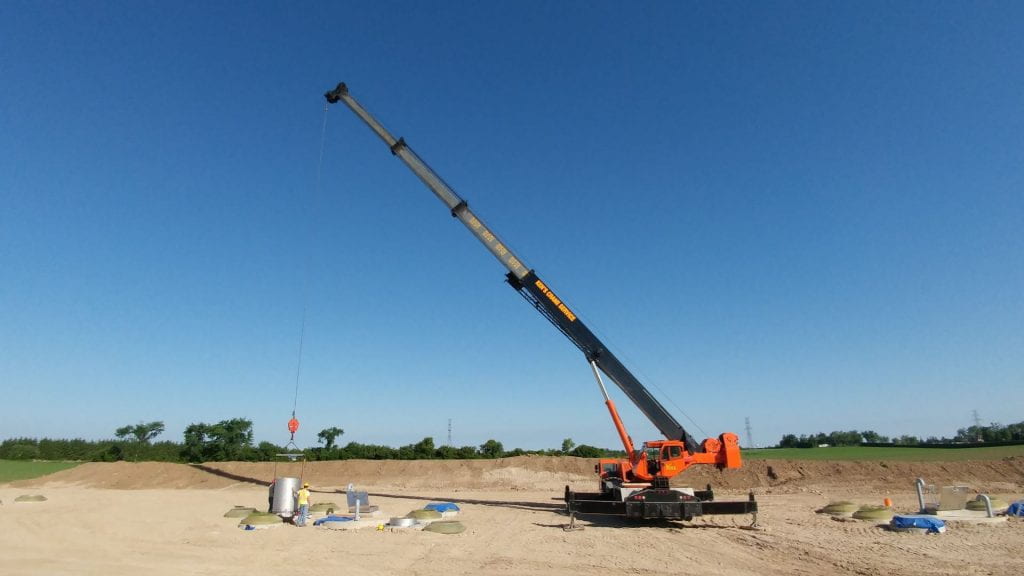
Soils
Silt Loam Description
The silt loam soil cores were extracted from the University of Guelph’s Elora Research Station, Ontario, Canada (43° 38′ 20″ N, 80° 24′ 37″ W). This soil is classified as a London series and is characterized as Gleyed Gray-Brown Luvisol. This soil is imperfectly drained and medium textured with 38% sand, 54.5% silt, 7.5% clay.
Loamy Sand Description
The loamy sand soil cores were extracted from a farm in Cambridge, Ontario, Canada (43° 27′ 28” N 80° 20′ 48” W). This soil is classified as a Lisbon series and characterized as Eluviated Melanic Brunisol. This soil is well-drained and coarsely textured with 79.2% sand, 17.5% silt, and 3.3% clay.

Silt loam soil profile from Elora, Ontario 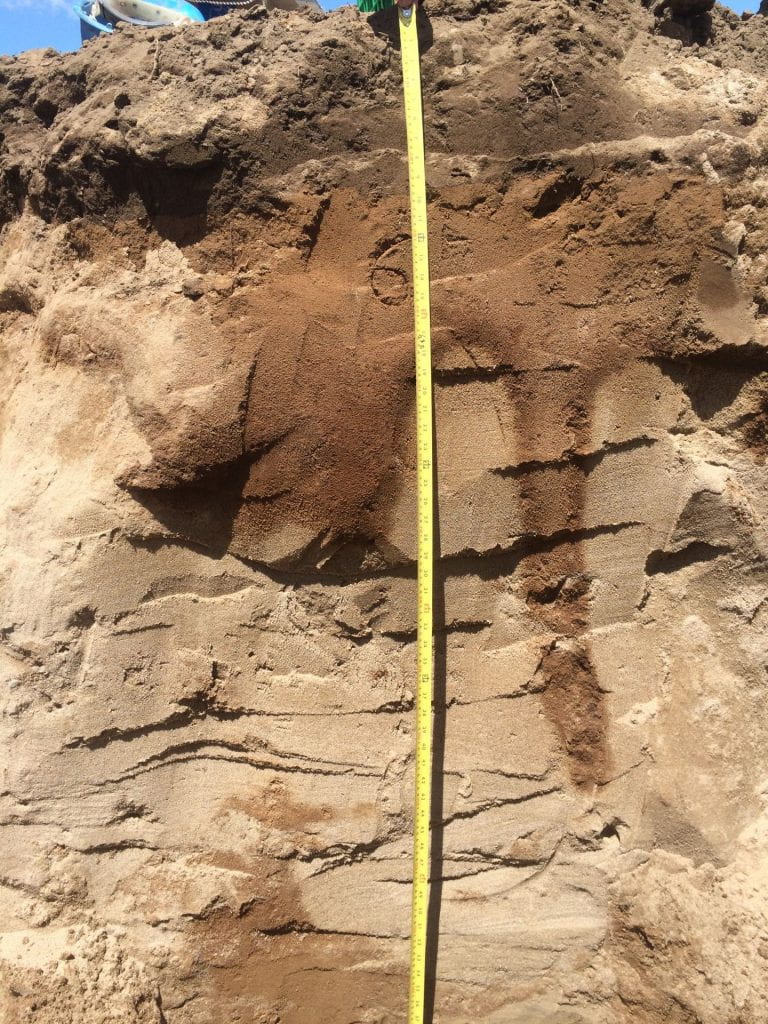
Loamy sand soil profile from Cambridge, Ontario

Cropping History
At the lysimeter facility, several experimental manipulations of farming practices occur:
- A conventional crop rotation of corn and soybean;
- A diverse crop rotation of corn-soybean-wheat that also incorporates cover crops; and
- A simulated winter warming to half of the diverse rotation plots.
| Conventional Treatment | Diverse Treatment | |
| Year 1 | Soybean | Soybean |
| Year 1 (Winter) | Fallow | Cover crop |
| Year 2 | Soybean | Wheat |
| Year 2 (Winter) | Fallow | Cover crop |
| Year 3 | Corn | Corn |
| Year 3 (Winter) | Fallow | Cover crop |

Lysimeter Diverse Crop Rotation Experiment:
This project aims to gain information on how a diverse crop rotation can promote soil health and provide soil ecosystem services. This is achieved by comparing a conventional crop rotation of corn and soybean against a diverse crop rotation of corn-soybean-wheat. A blend of cover crops consisting of daikon radish, ryegrass, crimson clover, and oats are planted during the non-growing season to promote nutrient recycling, carbon sequestration, water filtration, and climate regulation. These treatments are conducted for both sandy loam and silt loam soils.
The studies here will determine the environmental or economic benefits to diversifying crop rotations. The long term, continuous high precision monitoring of water budgets, N2O and NO3 leaching, crop yields, nitrogen use efficiency, greenhouse gas emissions, and microbial functional diversity will provide stakeholders with realistic data to inform best management practices that will lead to long-term agro-environmental sustainability.
Lysimeter Winter Warming Experiment:
The purpose of this experiment is to determine the effects of increasing the soil temperature on soil moisture, drainage, cover and cash crop growth, nitrous oxide emissions, nitrate leaching, and the decomposition of organic matter. This simulation of warmer winters can provide insight into how crop farming and soil ecosystem processes may change as a result of global warming. This research will help to predict how climate change may impact the hydrology and biological functions of soil ecosystems.
The winter warming experiment consists of half of the lysimeters with the diverse treatment being warmed throughout the winter with a ceramic heater in order to increase the surface temperature of the lysimeter.
Measurements & Data
In order to monitor soil health, measurements are taken at 1-10 minute intervals year-round. Follow the links below to learn more about the data collected at the Soil Health Interpretive Centre and how to download the complete lysimeter datasets.


